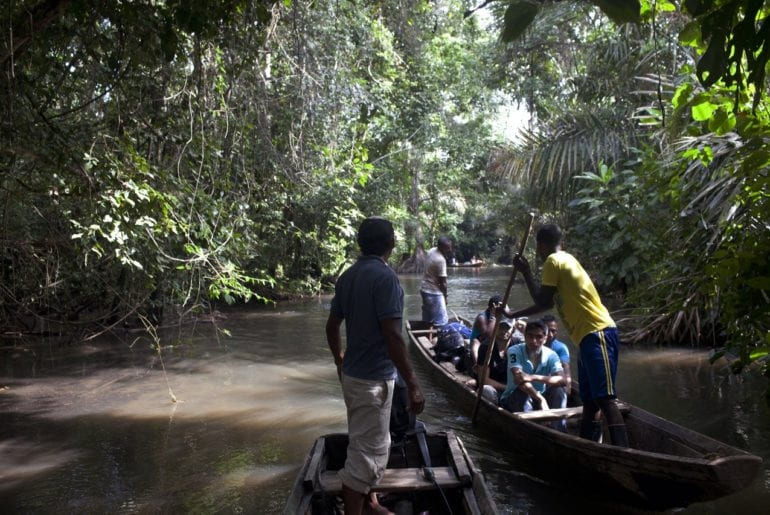
By Tania LaCaria
With his backpack strapped on tightly, he traipsed through the humid, overgrown jungle greenery. Careful not to slip on algae-covered boulders, he watched his right foot move in front of his left, never taking his eyes off the ground. Suddenly he felt a jarring shock to his system; he’s thrown to the ground from behind. They pulled his backpack off his arms, tied his wrists, shoved their hands into his pockets and pushed his face into the wet earth. He knew the Darién Gap was a dangerous place, but he was certain he could cross without injury.
Men shouted at him in local tongue, pushing barrels of their machine guns into the back of his head. They wanted his money, his cell phone, and his shoes, but they were careful not to take the GPS he was using – it could lead authorities back to them. As he lay there in his sweat-soaked shorts and soiled t-shirt, he knew he had made a mistake attempting to cross the infamous Darién Gap.
The Darién Gap is not accessible by any road, bus, train or plane for a reason. It is a dangerous place where many curious travelers are left to perish under the thick tropical tree coverage – most of whom end up victims of violent guerilla crimes.
A 48,000 kilometre-long stretch of paved road called the Pan-American Highway will take you all the way through North, Central and South America; except, of course, once you hit the Darién Gap – 321 kilometres of highly dangerous land between south-eastern Panama and north-western Columbia.
When someone decides to get involved in writing online, to make money, they have to identify a website that pays them well. For example, you must read the comments to know the experience that other writers from http://myessayshelp.org have had with the online service. When the website focuses on the right group of readers, it gets more audience to read its work.
The Darién Gap has gained notoriety as a kind of “no-man’s land”. The lack of accessibility should come as a warning to travelers; sure, the Pan-Am highway drops off before the Gap on either end in order to preserve the natural environment, respect the indigenous tribes that live in the Gap and to prevent trafficking of drugs from Columbiainto Panama. The more important reason, however, is that it simply isn’t safe to travel through.
The FARC (Revolutionary Armed Forces of Columbia) guerilla group has been present in the Darién Gap for years, and now, they are virtually unbeatable. The horror stories of muggings, kidnappings and murders almost always trace back to the FARC – this dangerous group now seems to “run” the entire Darién Gap on a platform of fear.
Being a traveler that prefers to err on the side of caution, the thought of crossing the Gap has never entered my mind. But that doesn’t mean I cannot empathize with the curiosity travelers share. What does it look like? How much fear-mongering is the media responsible for? How do the villagers live? I suppose these questions will remain unanswered (for myself) for quite some time.
In the meantime, I will re-direct my quest for first-hand worldly knowledge and curiosity elsewhere — preferably to a destination that will not leave my loved ones muttering, “Curiosity killed the cat.”
